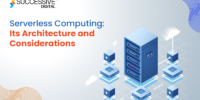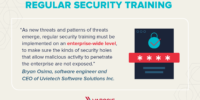Embarking on a journey to master the basics of Information Technology (IT) can be both exciting and rewarding. Whether you’re looking to start a career in IT or simply want to enhance your tech-savvy skills, mastering the fundamentals is the first step to success. In this article, we’ll explore quick tips to guide you from zero to hero in mastering IT basics.
1. Understand the Fundamentals of Computers
Begin your IT journey by understanding the fundamental components of computers. Learn about hardware components such as the CPU, RAM, storage devices, and peripherals. Familiarize yourself with software, including operating systems, applications, and how they interact to enable computer functionality.
2. Explore Operating Systems
Delve into the world of operating systems (OS). Understand the differences between popular operating systems like Windows, macOS, and Linux. Learn basic navigation, file management, and system customization. Operating systems serve as the foundation for computer use, making this knowledge crucial for IT beginners.
3. Grasp the Basics of Networking
Networking is a fundamental aspect of IT. Learn the basics of how networks function, including concepts like IP addresses, subnets, routers, and switches. Explore the different types of networks, such as local area networks (LANs) and wide area networks (WANs). Understanding networking is essential for troubleshooting and maintaining connected systems.
4. Dive into Cybersecurity Basics
Cybersecurity is a critical component of IT knowledge. Familiarize yourself with basic cybersecurity principles to protect systems and data. Learn about password security, encryption, firewalls, and common security threats. Cybersecurity awareness is essential in the digital age to safeguard personal and organizational information.
5. Master the Art of Troubleshooting
Effective troubleshooting is a valuable skill in IT. Develop a systematic approach to identify and resolve common computer issues. Learn to use built-in diagnostic tools, research solutions online, and understand error messages. Troubleshooting skills are invaluable for resolving technical challenges and maintaining system functionality.
6. Learn the Basics of Programming
While not mandatory for every IT role, understanding the basics of programming can open doors to various opportunities. Start with a beginner-friendly language like Python. Learn about variables, loops, and conditional statements. Programming knowledge enhances problem-solving skills and opens avenues for automation and scripting.
7. Familiarize Yourself with Cloud Computing
Cloud computing has become integral to IT infrastructure. Familiarize yourself with cloud concepts, services, and providers like AWS, Azure, and Google Cloud. Understand the advantages of cloud computing, such as scalability, flexibility, and cost-effectiveness. Cloud knowledge is increasingly in demand across various IT roles.
8. Stay Curious and Keep Learning
The IT landscape is ever-evolving, and curiosity is a key trait for success. Stay informed about emerging technologies, industry trends, and best practices. Explore online courses, forums, and communities to stay connected with the IT community. Continuous learning is the key to evolving from a beginner to a proficient IT professional.
Conclusion
Mastering IT basics is a rewarding journey that lays the foundation for a successful career in technology. By understanding computer fundamentals, exploring operating systems, grasping networking and cybersecurity basics, mastering troubleshooting, learning programming essentials, familiarizing yourself with cloud computing, and maintaining a curious mindset, you can go from zero to hero in the world of IT. Embrace the learning process, stay persistent, and enjoy the exciting adventure of mastering IT skills.








